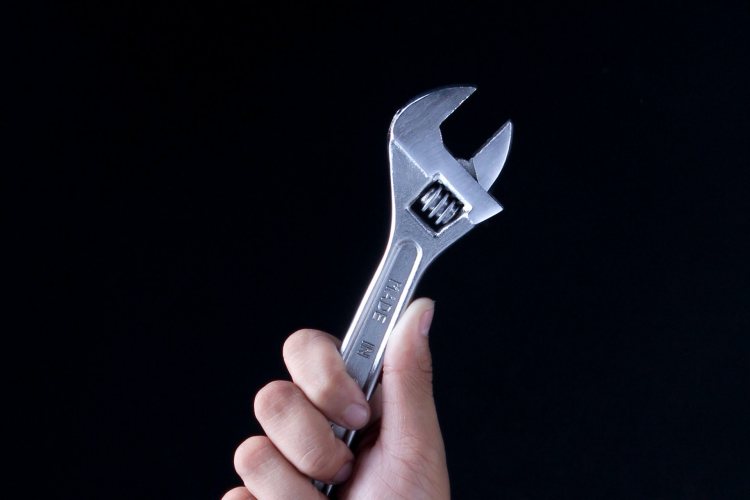Five Signs Garage Door Springs Need Tightening

Anyone with a garage door will no doubt have clocked the big springs that are on either side of a garage door installation.
Torsion springs for a garage door are an essential part of its operation, and if yours aren’t working very well, or have come loose, you may find yourself with a faulty or stuck garage door.
Fortunately, loose garage door springs are not the same as broken garage door springs. Indeed, it may be that they just need tightening again.
So, as Loveland’s premier garage door installation company, we’ve prepared this short guide that will help you spot the signs of a garage door spring that needs tightening. Read on…
You’ve Got a Noisy Door
All garage door installations make a little bit of noise as they open and close – even when they are well-balanced. But the noise shouldn't be too loud. If it is, this is definitely a sign your springs could need tightening.
Things to listen out for are the door squeaking, grinding, creaking or thudding excessively as the door opens and closes. These noises are a sign your springs may be under too much pressure. You will either need to get them tightened, or get a new door!
Your Door Is Moving Really Slow
Has your door started moving really slow? As if you’re watching a film in slow motion? This could also be a sign of a spring that needs looking at.
Broken garage door springs can prevent your door motor from moving at its usual speed. This is because the spring isn't able to adequately hold the garage door's weight, as it should.
If this is indeed the case, our advice is to get in touch with us, as Loveland’s local garage door repair experts. Fixing broken garage door springs is certainly not a DIY job!
Your Door Is Stuck and Won’t Lift
If your garage door won’t open or even lift, this is a fairly obvious sign that there’s a problem!
Side-mounted or torsion springs for a garage door should allow it to be lifted manually, even if there is a wear and tear issue. If you can’t even do this, it’s almost certain your springs are broken.
Similarly, if the door will only go up around six inches, this is actually a garage door mechanism kicking in to tell you there’s a problem.
In either case, our advice here is to absolutely call in garage door repair experts. Start messing with a door that won’t open and you may find yourself in a world of trouble.
Never forget, however easy working springs make lifting a door look, garage doors are extremely heavy and dangerous.
You’ve Got a Crooked Door
Look at your door on both sides. Are they in line? Or does it appear that the door is leaning one way or another? Ultimately, is it crooked, or straight?
If it’s crooked, it’s likely because you’ve got a broken garage door spring or cable on one side. This will stop one side of the door moving and your door will either go up lob-sided, or get stuck in your door tracks.
Side-Mount & Torsion – What’s The Difference?
Earlier in this blog we mentioned side-mount and torsion garage door springs – but what are they, and what’s the difference?
Well, torsion springs rely on torque to raise garage doors. Put simply, this means they use circular force around an axis, rather than push and pull force.
Torsion springs for a garage door are usually situated above the door frame. They will twist and turn on a metal shaft when force is applied, raising and lowering the door respectively.
Side-mount springs, on the other hand, are perhaps more commonly known as extension springs. These are the most popular type of garage door spring, and are usually located on top or either side of the garage door.
Once the door is opened, the springs expand, and keep the door open. When the door is closed, the springs will contract.
It's common practice for spring door to also come with safety cables. This prevents the springs from flying into the air and causing damage, if they break.
Garage Door Maintenance
So you know the difference between side-mount and torsion springs, and you know the common signs that your springs are broken or need to be tightened, but how can you maintain your garage door springs and ensure they last as long as possible?
Here are a few tips from Loveland’s leading garage door repair company:
- Keep your springs free of excessive dust and debris
- Use lubricant on any squeaky garage door parts
- Regularly check your garage door and springs for any damage
Should you identify any issues with your garage door installation, our advice is that you get in touch with us immediately.
The force that springs are under is huge, and a DIY garage door repair attempt could end up causing serious damage if not done properly. Don’t risk it – call us!
How We Can Help
We are proud to be the first choice overhead door company for people in and around the Loveland area – specializing in garage door repair and garage door installation for many years.
Whether you have broken garage door springs, or a stuck garage door, we can help. Get in touch with one of our friendly customer service team today, and we’ll be happy to help.
